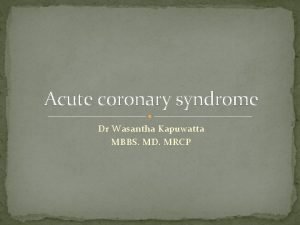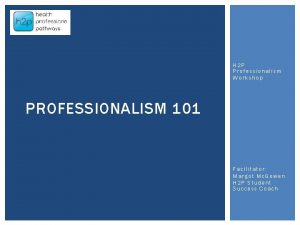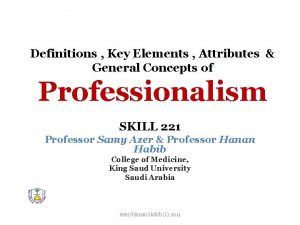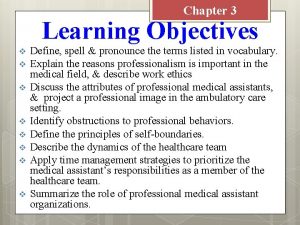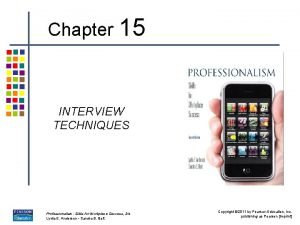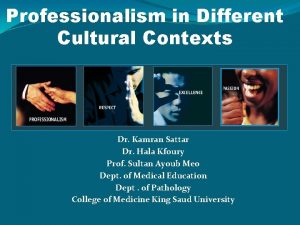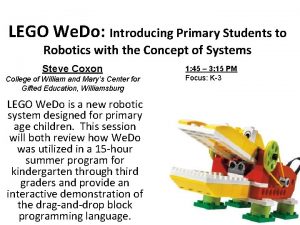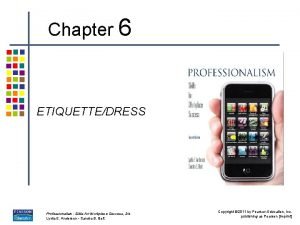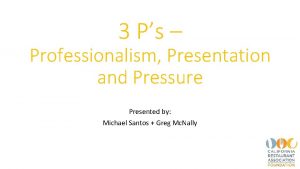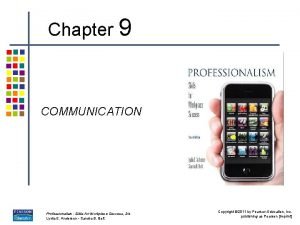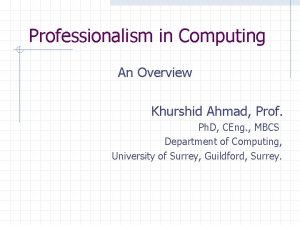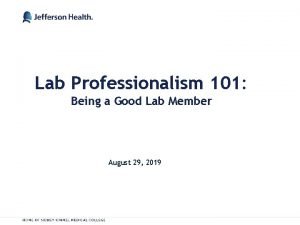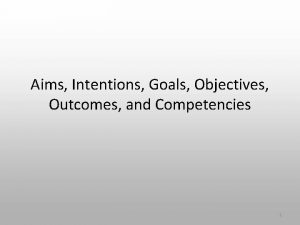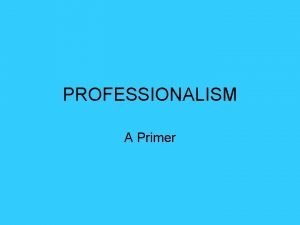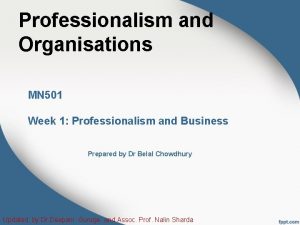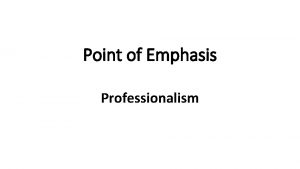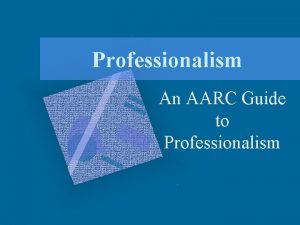Professionalism Prof Wasantha Gunathunga Course unit Advisor professionalism

































- Slides: 33

Professionalism Prof. Wasantha Gunathunga Course unit Advisor, professionalism 18 th June 2013

l What is a profession and what is professionalism

l The Merriam-Webster dictionary defines professionalism as "the conduct, aims, or qualities that characterize or mark a profession or a professional person"; and it defines a profession as "a calling requiring specialized knowledge and often long and intensive academic preparation. “ l http: //www. mindtools. com/pages/article/professionalism. htm

l Not all business areas have a stable core of knowledge (and the academic qualifications that go with this); not all areas demand extensive knowledge to practice successfully; and not all professionals have top degrees in their field. l Eg. Dr. Pubilis Silva of Mount Lavinia Hotel

l What matters, though, is that these professionals have worked in a serious, thoughtful and sustained way to master the specialized knowledge needed to succeed in their fields; and that they keep this knowledge up-to-date, so that they can continue to deliver the best work possible

Examples l Prof. Ediriweera Sarathchandra l Luxman Kadiragamar l Dr. Pabilis Silva l Gotabhaya Rajapaksha l Who are your examples and why?

Some attributes of prefessionalism l Specialized knowledge. l Competency. l Honesty and integrity. l Respect. l Accountability. l Self-regulation. l Image.

Emotional intelligence l Emotional intelligence is the ability to recognize your emotions, understand what they're telling you, and realize how your emotions affect people around you. Emotional intelligence also involves your perception of others: when you understand how they feel, this allows you to manage relationships more effectively. l http: //www. mindtools. com/pages/article/new. CDV_59. htm

Body-mind- consciousness: the foundation of all soft skills

Nerves System l. Mental Function l. Speech l. Cranial nerves l. Sensory System l. Motor System l. Reflexes l. Gait l. Skull l. Spine l. Meninges

Mental Functions l Thinking l Feeling l Perceiving l Willing l Remembering

From Review of Medical Physiology by Ganong l Neuro-physiology Learning Implicit memory Explicit memory Processing of information from senses Coding of information Nervous System Mental Functions

l “information from senses…. processed in a way not yet fully understood” Ganong RMP 22 nd ed. P. 271

l Other approaches l Meditation methods l TM Maharishi Mahesh Yogi l Mindfulness – Jon Kabat Zinn, Prof. emeritus of medicine, uni of Massachusetts, USA

• some useful outcomes of contemplative neuroscientific Qualitative research in the past A Living being has three components Body, mind, consciousness

• Body Mind, consciousness Mental Functions Mental functions involves mind and consciousness

Body, mind and consciousness – an analogy

Thinking Body Mind consciousness Feeling Attachment Perceiving willing Conflict

Contemplative Science Feeling, Perceiving, Willing

Point where contemplation is applied Body Mind consciousness Feeling Attachment willing Perceiving Conflict

Developing dual vision eye 5 5 5

Watching the dynamic mind l and not stopping l Let the mind be dynamic l Need to keep the body static

Contemplating on body l With 25 identified parts of the body

25 parts of the body for scanning l Head, forehead, right eye, nose, left eye, right cheek, left cheek, mouth, chin, neck, (10) l chest upper, chest lower, abdomen upper, abdomen middle, abdomen lower, (5) l r. thigh, r. knee, r. shin, r. foot. r. toes, (5) l left thigh, l. knee, l. shin, l. foot, l. toes. (5)

Stopping at feeling and perceiving l Body pains l Sounds l Thoughts

Activity l Trial journey

Contemplating on pain l Watching pain as separate

Automatic l Seeing how mind works l seeing pain, thoughts, and body as separate

Clinical application

Body pain Mind Feeling consciousness Pain Attachment willing Perceiving Conflict

Body Mind Feeling consciousness Depressi ve thoughts willing Perceiving Attachment Conflict OCD hallucinati ons

l Enormous l For health and clinical opportunities relief and cure

l Thank you
 Wasantha motors galle
Wasantha motors galle Dr.wasantha kapuwatta
Dr.wasantha kapuwatta Wasantha sena weliange
Wasantha sena weliange How to install a lintel in a single brick wall
How to install a lintel in a single brick wall Course number and title
Course number and title Course interne course externe
Course interne course externe Unit 6 review questions
Unit 6 review questions No professionalism
No professionalism Domain 4 showing professionalism examples
Domain 4 showing professionalism examples Discuss principles of professionalism
Discuss principles of professionalism Professionalism workshop
Professionalism workshop Elements of professionalism
Elements of professionalism Summarize three obstructions to professionalism
Summarize three obstructions to professionalism Professionalism skills for workplace success
Professionalism skills for workplace success Attributes of professionalism
Attributes of professionalism What is professionalism
What is professionalism Sales professionalism
Sales professionalism What is professionalism
What is professionalism Professionalism in project management
Professionalism in project management Professionalism conclusion
Professionalism conclusion Professionalism conclusion
Professionalism conclusion Gracious professionalism definition
Gracious professionalism definition Vanderbilt professionalism program
Vanderbilt professionalism program Ac61-98 plan of action
Ac61-98 plan of action Professionalism: skills for workplace success
Professionalism: skills for workplace success What are the three p's of professionalism
What are the three p's of professionalism Professionalism objectives
Professionalism objectives Offensive language in the workplace
Offensive language in the workplace Professionalism is judged against a set of
Professionalism is judged against a set of Professionalism in computing
Professionalism in computing Labarchives jefferson
Labarchives jefferson Integrity and professionalism
Integrity and professionalism Professionalism in a sentence
Professionalism in a sentence Professionalism in teacher education
Professionalism in teacher education

